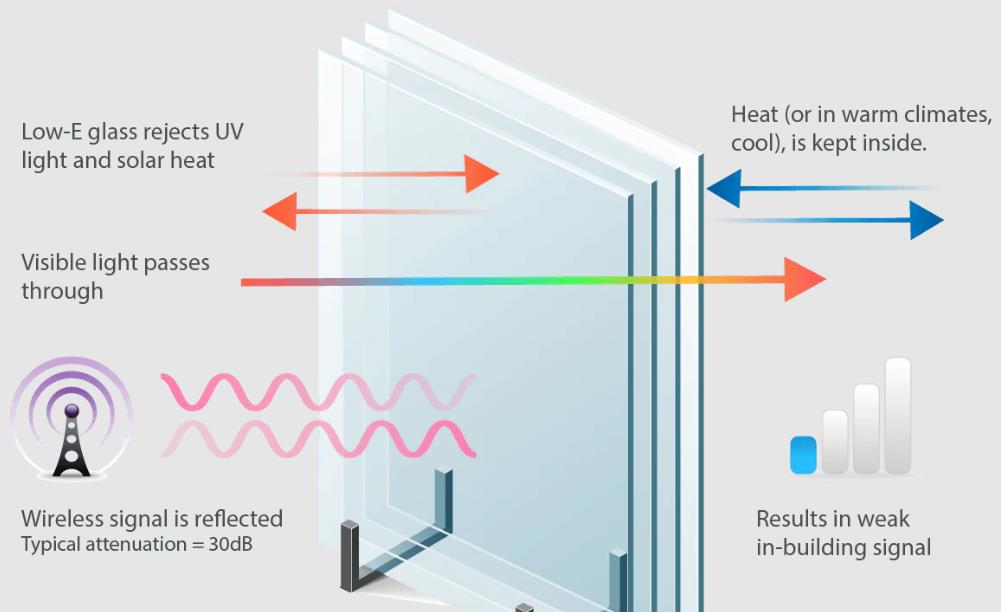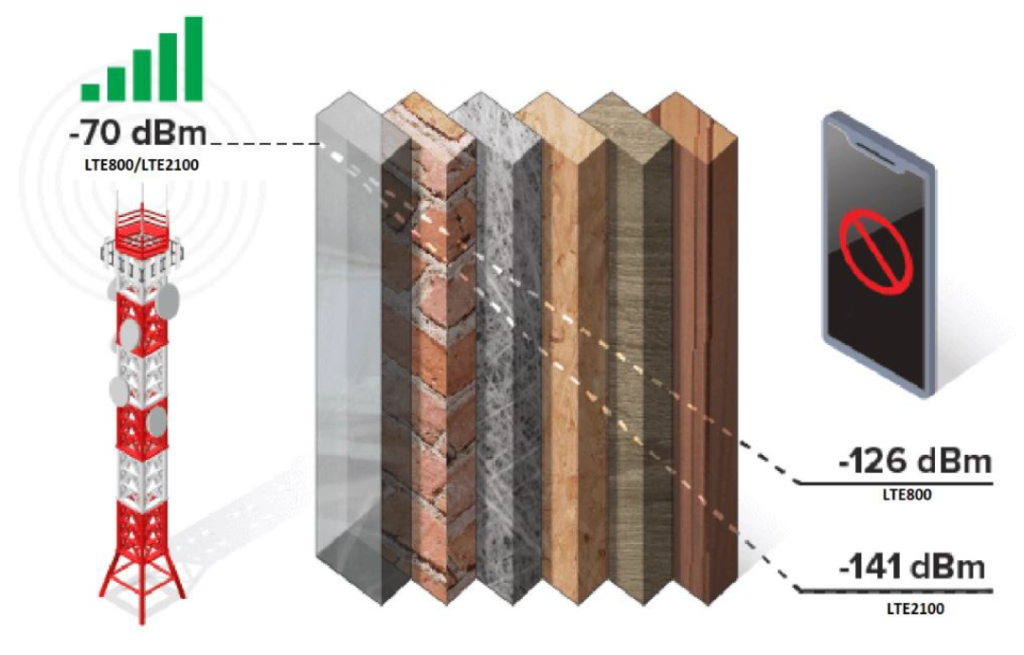The Most Effective Strategies for Predicting Network Coverage in Future Constructions
Share

In the ever-evolving landscape of technology, predicting network coverage in future buildings is a crucial aspect that demands attention. The ability to anticipate how well a network will perform within a structure is paramount for providing optimal connectivity and ensuring a seamless user experience. In this blog post, we’ll delve into the why, the key benefits for customers, and the most effective strategies for predicting network coverage.
Why Predict Network Coverage for Future Buildings?
Understanding the motivations behind predicting network coverage is fundamental to appreciating its significance. As technology advances, our reliance on robust connectivity grows exponentially. Whether it’s for everyday communication, smart home applications, or business operations, a strong and reliable network is the backbone of modern living.
Differences Between Existing and Future Buildings
Future building designs, especially those focused on energy efficiency, present distinct challenges for network coverage compared to traditional structures. As highlighted in our recent webinar, upcoming constructions are mandated to comply with rigorous thermal insulation regulations, resulting in what are known as energy-efficient buildings.
These energy-efficient buildings, often equipped with materials like low E glass and specialized insulation, pose significant challenges for robust network coverage. Unlike traditional constructions that typically exhibit lower transmission losses, future buildings demand a reevaluation of network prediction strategies.
The use of low E glass, designed to minimize heat transfer, inadvertently amplifies signal attenuation for radio waves, resulting in approximately 30 decibels of signal loss—equivalent to the obstruction caused by a concrete wall. This discrepancy between traditional and future buildings necessitates tailored approaches for anticipating and mitigating coverage issues.

Source: Waveform
Main Challenges in Predicting Network Coverage
Predicting network coverage in modern buildings presents several significant challenges, including:
Material Impact on Signal Propagation: The choice of modern construction materials, such as low E glass and specialized insulation, significantly impacts signal propagation, resulting in increased attenuation and coverage challenges.

Source: Wilson Amplifiers
In the image below, you can see how little outdoor signal can penetrate the walls inside of a modern low E glass building, resulting in many areas without a network connection.
Resource-Intensive Surveys: Conducting thorough site surveys to assess network conditions within modern buildings is resource-intensive, demanding substantial time and effort. Access constraints and logistical hurdles further complicate this process, potentially leading to delays in network deployment.
Optimization vs. Over-Engineering: Balancing network design optimization with cost-efficiency is crucial. Over-engineering can inflate project costs by necessitating an excess of antennas, while under-engineering may result in inadequate coverage, necessitating costly post-installation optimizations.
Integration of External Data Sources: Integrating external data sources, such as macro network details, poses challenges in ensuring accuracy and reliability. While ideal scenarios involve direct data acquisition from network operators, alternative sources like crowdsourced coverage maps and governmental databases often serve as viable substitutes.
Key Benefits of Predicting Network Coverage
- Seamless Connectivity: Predicting network coverage ensures that customers experience uninterrupted connectivity, enabling them to stay connected with their digital world effortlessly.
- Enhanced User Experience: Anticipating and addressing potential network issues in advance leads to an improved user experience. Customers can enjoy faster data speeds and smoother performance on their devices.
- Future-Proofing Investments: For property owners and developers, predicting network coverage is a strategic move. It allows them to future-proof their investments by incorporating the latest connectivity solutions, making their properties more attractive to potential occupants.
Effective Strategies for Predicting Network Coverage
1. Survey Data Analysis: The Foundation of Prediction
One of the primary strategies is leveraging survey data. Conducting thorough surveys of the building’s interior helps in understanding the existing network landscape. The key use case involves identifying potential dead zones or areas with weak signals. The advantages of this approach include precise insights into the current network scenario within the building.
Advantages:
- Precision: Survey data analysis provides detailed and precise information about the existing network conditions.
- Targeted Improvements: Identifying specific areas with weak signals allows for targeted improvements to enhance coverage.
Challenges:
- Resource-Intensive: Conducting thorough surveys can be resource-intensive, requiring time and effort.
2. Inbuilding Prediction with Antenna Positioning
Another approach focuses on in-building prediction using different antenna positions. This strategy involves strategically placing antennas around the building to simulate and predict network coverage. The key use case is to optimize antenna placement for maximum coverage.
Advantages:
- Optimized Placement: Antennas can be strategically placed for optimized coverage, reducing potential dead zones.
- Cost-Effective: Simulating antenna positions in a virtual environment can be more cost-effective than physical adjustments.
Challenges:
- Simulation Variability: Real-world conditions may introduce variability not accounted for in simulations.
3. Geo/Macro Data Integration for Comprehensive Insights
The third strategy involves geo/macro data integration to predict coverage accurately. This comprehensive solution considers external factors and introduces the concept of using iBwave Reach for precise predictions.
Advantages:
- Holistic Analysis: Geo/macro data integration provides a holistic analysis of external factors impacting network coverage.
- Precision: With iBwave Reach, cou can enhance prediction precision with advanced capabilities.
Challenges:
- Data Integration Challenges: Integrating external data sources may pose challenges in ensuring accuracy. However, with iBwave Reach, these challenges disappear thanks to its seamless integration with our inbulilding design tool iBwave Design.
How iBwave Can Help
Leveraging iBwave’s suite of solutions, including iBwave Reach, Design, and Mobile Survey, significantly aids in predicting network coverage effectively. For example, iBwave Reach facilitates real and accurate data integration, considering elevation, surroundings, and more. The seamless integration between iBwave tools eliminates challenges in data integration, ensuring a comprehensive and precise approach to predicting network coverage.
Here’s how our tools can help you predict network coverage:
- Survey Data Analysis – iBwave Mobile & iBwave Design
iBwave Mobile is a simple and cost-effective solution empowering field technicians to survey LTE, 5G, Wi-Fi, or P25 Public Safety Networks quickly and seamlessly. iBwave Mobile – our simple mobile application seamlessly integrates with a lightweight and powerful Epiq PRiSM scanner for deeper scanning of wireless networks.
iBwave Mobile also integrates with our flagship solution for designing in-building networks, iBwave Design. Thanks to this integration, you can easily interpolate the survey data and predict the network coverage inside of your future building.

- In-Building Prediction with Antenna Positioning – iBwave Design
iBwave Design is the industry standard solution for designing the best-in-class inbuilding wireless networks. You can easily position antennas around the building and simulate their performance and penetration in the building at different heights and floors.
- Geo/Macro Data Integration – iBwave Reach
iBwave Reach is a solution for designing campus networks that bridges the gap between indoor and outdoor wireless. By integrating the macro network data, you can see its effect on the indoor wireless networks and penetration inside of the building. iBwave Reach considers elevation and surrounding buildings, giving you the most accurate predictions. Another advantage is its integration with iBwave Design, bridging the data integration challenges.

Conclusion: Empowering Connectivity in the Future
In conclusion, predicting network coverage is not just about ensuring connectivity; it’s about empowering the future. By understanding the motivations, benefits, and effective strategies, stakeholders can make informed decisions. iBwave’s solutions play a pivotal role in navigating the complexities of network prediction, making it an indispensable ally in the journey towards seamless connectivity.
Don’t miss out on the deeper insights! Watch our on-demand webinar with our special guest, STF Gruppe, to learn everything about predicting network coverage in future constructions.

Check out our blog for more tips and topics to learn more about wireless networks and their planning!


















